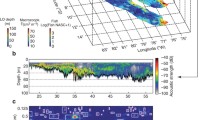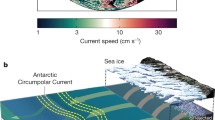ABSTRACT
We propose an operational definition of spatial structure in the oceanic ecosystem; it is equivalent to the large-scale, horizontal distribution of the dominant ecophysiological rate parameters for the questions of interest. In an important, particular case, the relevant rate parameters are those that characterize autotrophic production. In the ocean, these parameters are believed to be distributed in a manner that is not smoothly continuous. Rather, they seem to have a piecewise continuous distribution. This leads to a requirement to partition the ocean into a suite of provinces where the boundaries between the provinces mark the locations of abrupt changes in the magnitudes of the rate parameters. The area covered by a particular province represents an area of common physical forcing, insofar as the forcing is relevant to autotrophic production. The boundaries are taken to be elastic rather than fixed, such that they can respond to variations in forcing. At any given time, the boundaries can be located with the aid of remotely sensed imagery, especially ocean-color imagery.
Similar content being viewed by others
Author information
Authors and Affiliations
Additional information
Received 7 January 1999; accepted 2 June 1999.
Rights and permissions
About this article
Cite this article
Platt, T., Sathyendranath, S. Spatial Structure of Pelagic Ecosystem Processes in the Global Ocean. Ecosystems 2, 384–394 (1999). https://doi.org/10.1007/s100219900088
Issue Date:
DOI: https://doi.org/10.1007/s100219900088




